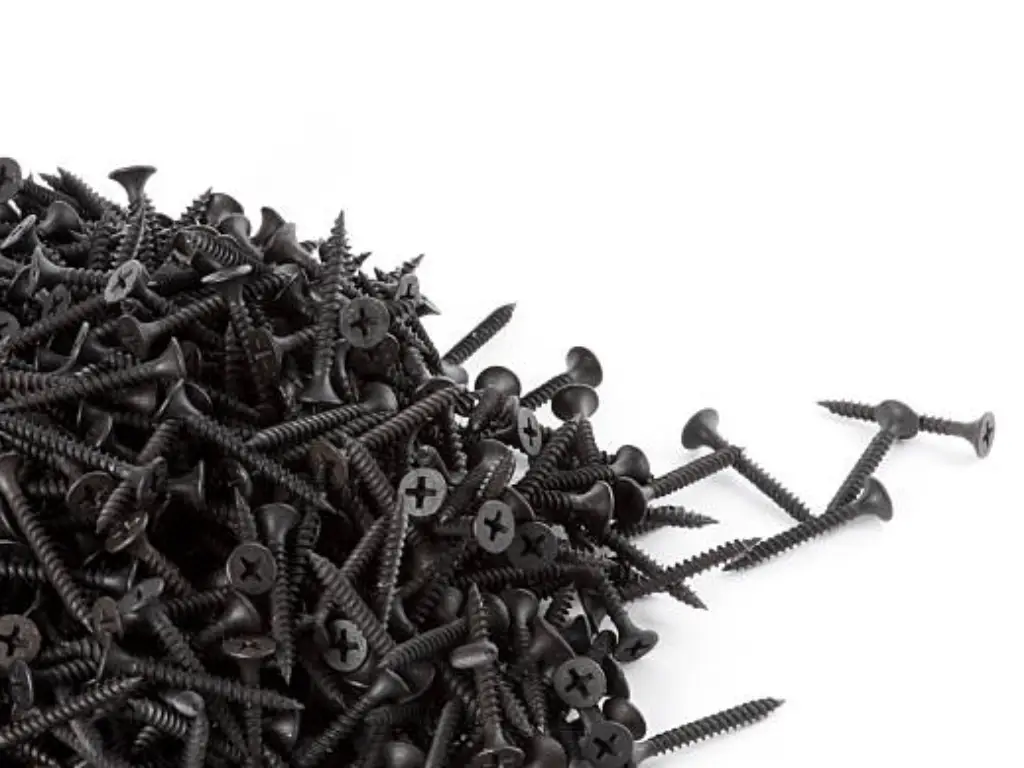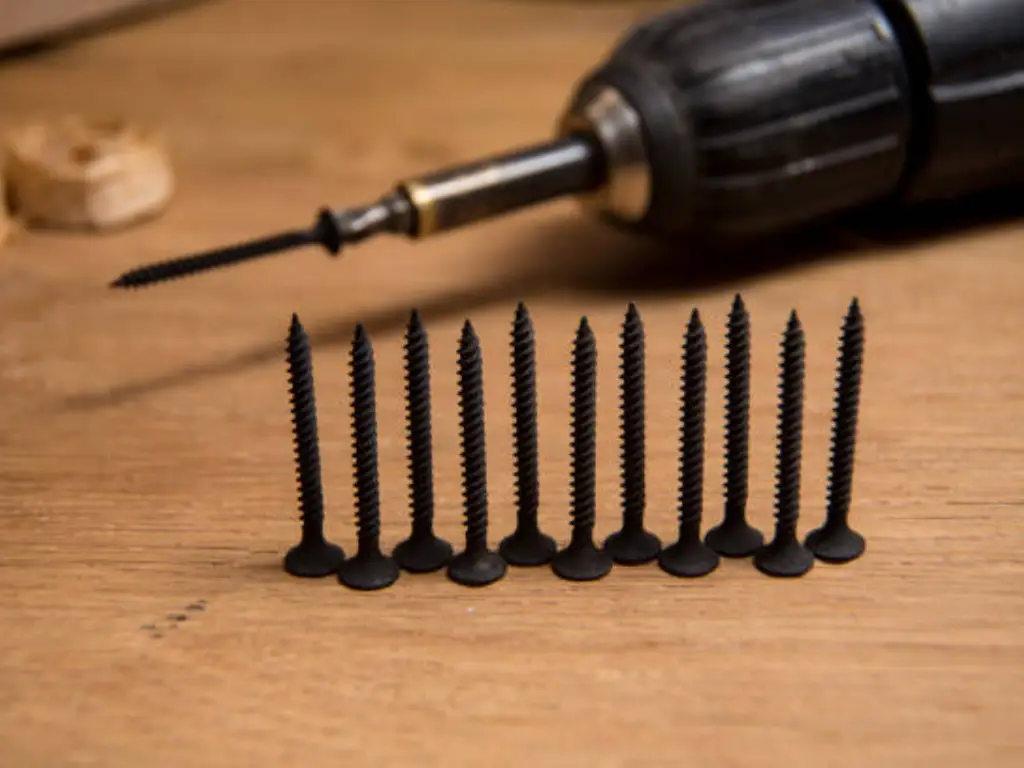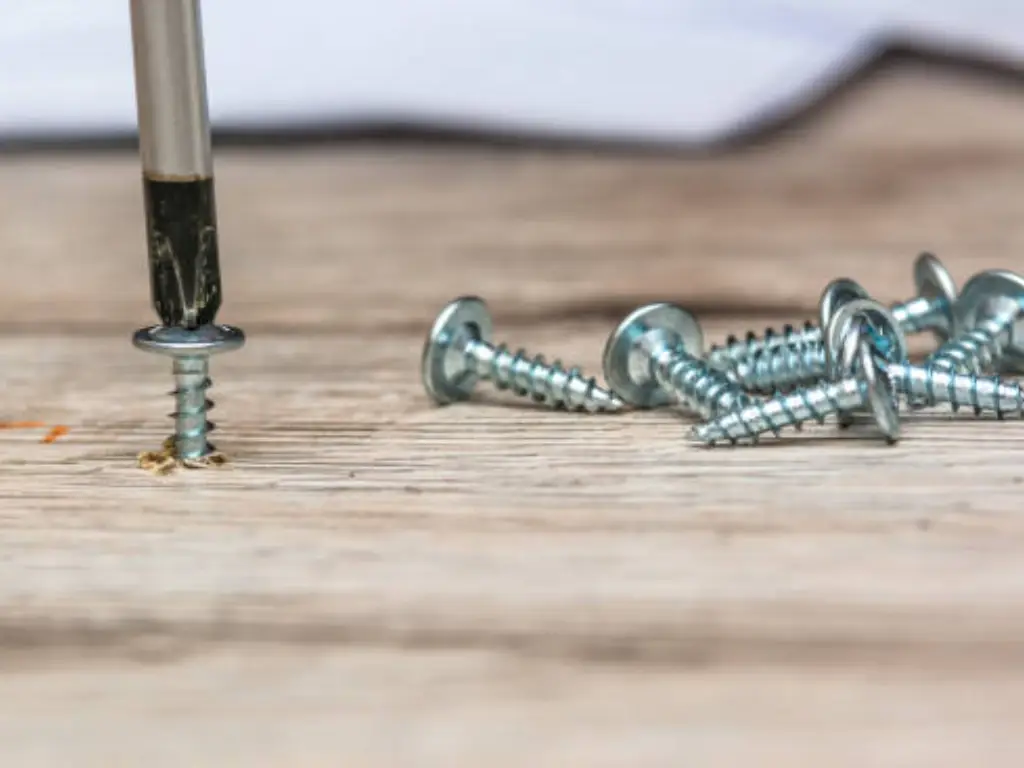What Are Drywall Screws?
Drywall screws have become a ubiquitous fastener in the construction and woodworking industries, prized for their durability and ease of use. These screws are specifically designed for securing drywall sheets to metal or wood studs, featuring a fine thread for metal studs and a coarser thread for wood studs. What distinguishes drywall screws is their bugle head, which allows for a flush finish against the drywall surface without damaging the outer paper layer. Moreover, the black phosphate coating on these screws not only offers corrosion resistance but also reduces friction, making the installation process smoother.

While drywall screws are engineered for a particular application, their use has expanded beyond just affixing drywall. This can mainly be attributed to their sharp point and unique design, which provides strong grip and stability. The question “can you use drywall screws in wood” often arises because, at first glance, these screws seem like they could be a versatile fastener for various materials. However, understanding the precise design and intended usage of drywall screws is crucial for any DIY project or professional construction task.
Drywall Vs. Wood Screws: Knowing the Difference
The primary difference between drywall screws and wood screws lies in their design and intended application. Wood screws feature a sharp point and a smooth shank that allows them to grip the wood tightly, creating a strong connection between separate pieces. Typically, wood screws have a coarser thread than drywall screws and a tapered head that can sit flush or slightly below the surface of the wood, depending on the project’s requirements. This design is particularly effective for working with softwoods, hardwoods, and plywood.
On the other hand, drywall screws are known for their fine thread and sharp point, designed specifically for attaching sheets of drywall to studs. The fine thread version is particularly suited for metal studs, while the coarser thread version works best with wood studs. Despite these differences, people often wonder whether you can use drywall screws in wood, especially considering their strength and versatility. Yet, it’s the nuances in their construction—such as the type of metal used and the thread pattern—that dictate their optimal use cases and highlight the importance of choosing the right screw for the job.
| Feature | Drywall Screws | Wood Screws |
| Design Purpose | Engineered specifically for attaching drywall to studs. | Designed to bond wood pieces securely together. |
| Thread Type | Fine thread for metal studs; coarser for wood studs. | Generally coarser threads for robust grip in wood. |
| Head Type | Bugle head, to sit flush with the drywall surface without tearing the paper. | Flat or tapered head designed to countersink into wood for a smooth finish. |
| Material | Often made from hardened steel with a black phosphate coating for corrosion resistance. | Available in various materials including stainless steel, brass, and zinc-coated for different environments. |
| Tensile Strength | High, but more prone to breaking under lateral stress due to hardness. | Variable, designed for tensile and shear strength suitable for wood’s nature. |
| Usage | Predominantly for attaching drywall panels to studs. | Wide-ranging use in woodworking projects for joining pieces of wood. |
| Pilot Hole | Not always necessary, but recommended in harder materials. | Often required to prevent wood from splitting. |
| Cost | Generally more affordable due to standardization and bulk use. | Can vary widely based on material, size, and design complexity. |
Can You Use Drywall Screws in Wood? Pros and Cons
You might find yourself asking, “Can I use drywall screws in wood?” The answer isn’t a simple yes or no. While it’s technically possible, there are several pros and cons to consider. One significant advantage is that drywall screws are readily available and relatively inexpensive. They also have a sharp point and fine thread that can make them easier to drive into pieces of wood without a pilot hole. This can be particularly helpful for hobbyists or in scenarios where precision and budget are key considerations.
However, there are notable drawbacks. Drywall screws are made from a harder steel than wood screws, which means they are more brittle and prone to snapping under certain stresses, such as when being driven into hardwoods or subjected to lateral pressure. Additionally, the flat head and bugle head design, ideal for drywall, can cause the wood to split if not countersunk properly. This potential for damage, coupled with their lack of corrosion resistance compared to some wood screws, especially in outdoor or moisture-prone environments, suggests that choosing the appropriate fastener is crucial for the longevity and integrity of your wood projects.
How to Properly Use Drywall Screws in Wood?
If you decide to use drywall screws in wood, following a proper method can minimize potential issues. Firstly, consider using fine thread drywall screws for soft woods and coarser thread for harder woods to ensure better grip. Before driving the screw, drilling a pilot hole can significantly reduce the risk of the wood splitting or the screw breaking. This step is crucial, especially when working near the edge of a piece of wood or using drywall screws on hardwoods.

For the best results, use an impact driver with a square drive or Phillips head bit that matches the drywall screw head. This ensures a secure fit and reduces the chances of stripping the screw head. When fastening two pieces of wood, ensure the drywall screw’s length is adequate to penetrate the top piece of wood and go at least halfway through the bottom piece. This provides a strong joint, although not as strong as that created by a genuine wood screw. Remember, while using drywall screws in wood can be a workaround for some applications, they are not a substitute for wood screws in projects requiring maximum strength and durability.
Creative Uses for Drywall Screws in Woodworking Projects
Drywall screws, while not traditionally used in woodworking, can have their place in creative projects. For instance, when assembling temporary wood jigs or fixtures, drywall screws can be an economical and efficient choice. Their sharp point and easy driving make them excellent for quick assembly work where the ultimate tensile strength is not the primary concern. Additionally, in artistic woodworking projects where the screw heads will be concealed, the type of screw might be less important, giving way to using what’s readily available, such as drywall screws.
Moreover, for rough carpentry projects like building workbenches or storage shelves in a garage, drywall screws can serve well. Their fine thread can provide sufficient grip in softer woods, making them suitable for applications where aesthetics and long-term durability are not the primary objectives. It’s remarkable how, with a bit of ingenuity, tools and materials intended for one purpose can find new life in completely different applications, showcasing the adaptability inherent in the craft of woodworking.
Troubleshooting Common Issues When Using Drywall Screws in Wood
Despite the potential benefits, using drywall screws in wood can sometimes lead to problems like breaking, stripping, or causing wood splits. If a drywall screw breaks while being driven into wood, the best course of action is to remove it and replace it with a new one, preferably after drilling a larger pilot hole. Stripping often occurs when the wrong driver bit is used or too much force is applied. Ensuring a proper fit between the driver bit and drywall screw head can mitigate this issue.
To prevent wood splits, especially near the edges, it’s advisable to drill pilot holes and avoid over-tightening the screws. It’s also wise to step back and assess whether a wood screw might be a better choice for the application, particularly if structural integrity is at stake. Remember, troubleshooting is as much about prevention as it is about fixing issues after they arise. Knowing when and how to use drywall screws in wood can save time and frustration, leading to more successful and satisfying projects.
The Science Behind Screw Selection
Choosing the right screw for your project isn’t just a matter of grabbing whatever’s handy; there’s a science to it. The composition, design, and coating of a screw can significantly affect its performance in different materials. For instance, stainless steel screws offer excellent corrosion resistance, making them ideal for outdoor use, whereas black phosphate drywall screws are best suited for indoor applications where moisture is minimal. The diameter and length of the screw also play a crucial role in determining its holding power and the thickness of materials it can effectively join.

Understanding the mechanical properties of screws, such as tensile strength (resistance to being pulled apart) and shear strength (resistance to being cut), is essential for making informed choices. Drywall screws, for example, have high tensile strength but lower shear strength compared to some wood screws, affecting their suitability for load-bearing applications. This scientific approach to selecting fasteners ensures that your projects are not only aesthetically pleasing but also structurally sound and durable over time.
Alternatives to Drywall Screws for Wood Fastening
For those instances where drywall screws aren’t the best fit, numerous alternatives offer distinctive advantages for wood fastening. Wood screws, with their coarser threads and tapered heads, are explicitly designed to pull and hold wood pieces together, providing a stronger joint than drywall screws can offer in most cases. Deck screws, made of corrosion-resistant materials like stainless steel or coated in protective finishes, are excellent for outdoor projects exposed to moisture.
For heavier loads or structural applications, lag screws or bolts provide the needed strength and stability. These fasteners have larger diameters and are often used in conjunction with washers to distribute load more effectively. For fine woodworking projects where the appearance of the fastener is a consideration, brass or bronze screws can add a decorative touch while offering good durability.
Conclusion
The question of “can you use drywall screws in wood” uncovers a deeper exploration of the right tool for the right job. While it’s possible to use drywall screws in wood for certain applications, understanding the strengths and limitations of these fasteners is crucial for success. By considering the project’s specific needs and the materials involved, you can make informed decisions that ensure your work is not only beautiful but built to last. Remember, the foundation of any great woodworking project is not just creativity and skill but also the wisdom to choose the appropriate tools and materials.






